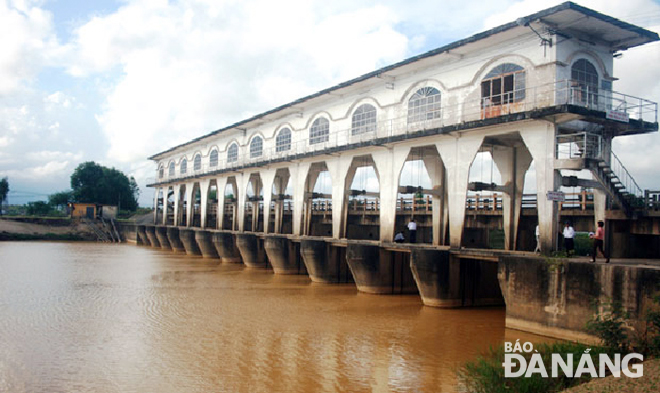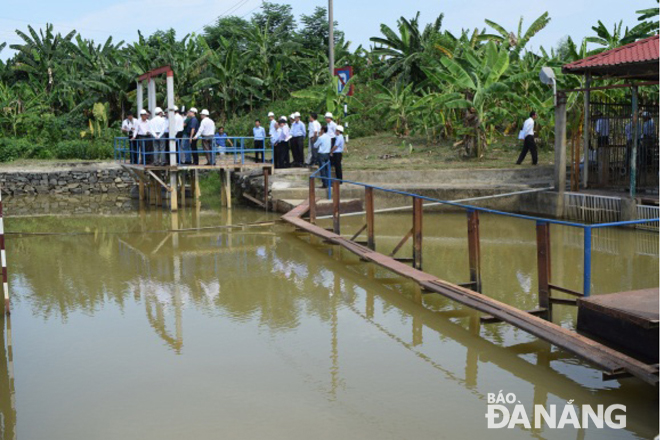Red Bridge River salinity needed to be quickly resolved
In recent days, Da Nang’s Cau Do (Red Bridge) River has suffered from severe saltwater contamination, which is adversely affecting water supplies for the daily lives of locals, and for agricultural and industrial production activities. The local authorities, therefore, are taking various effective measures, in a prompt fashion, to handle this matter of deep concern.
 |
| The An Trach Pumping Station is facing a shortage of raw water for production activities. |
A representative from the Da Nang Water Supply Company (DAWACO) said the main reasons for the increasing salinity levels were to be prolonged heatwave, low tides on the Han River, and a decrease of upstream freshwater sources over recent days.
Mr Hoang Thanh Hoa, the Deputy Director of the municipal Department of Agriculture and Rural Development, some hydropower plants upstream of the Vu Gia- Thu Bon rivers in Quang Nam Province have stopped discharging water due to their halted electricity production.
The discharge capacity reported at the Dak Mi 4 hydropower plant is now only 3m3/s, partly resulting in the severe salinity facing the city’s Cau Do (Red Bridge) River. The salinity reported here is much higher than the allowed limits.
In his remarks, the problem of salinity is predicted to be more severe and prolonged in the coming time.
 |
| The highest salinity levels of the Red Bridge River recorded at 9.00am on 5 September were 2,019mg/l, around 9 times higher than the allowed limits. |
To handle this matter of deep concern, the Da Nang Water Supply Company (DAWACO) is exerting every effort to exploit all possible raw water resources to ensure enough fresh water supplies for locals. However, the Son Tra and Hai Van water plants are facing a severe shortage of raw water resources due to the prolonged heatwave baking the whole city.
In a similar trouble, the operation of the An Trach Pumping Station is now unstable as it only satisfies 70% of the current water supply requirements,
According to Mr Hoa, it is high time for the municipal People’s Committee to urge the Ministry of Natural Resources and the Environment to release an instruction which requires the the Dak Mi 4 hydropower plant to increase its discharge capacity to 12m3/s from the current 3m3/s so as to push the salinity out of the salt-contaminated water source.
Meanwhile, the A Vuong and Song Bung 4 hydropower plants must increase their electricity production and the discharge of water into the rivers’ lower sections.
Furthermore, it is necessary for the authorities of Quang Nam Province and Da Nang together propose that the Ministry of Natural Resources and the Environment should adjust the current operating procedures of the hydropower reservoirs in the coming time in a bid to deal with problems mentioned above.
Accordingly, heed should be paid to making adjustments in terms of coordinating water discharge activities in the dry and rainy seasons in order to eliminate the salinity at the Cau Do River, and increase the effectiveness of flood mitigation at downstream areas.